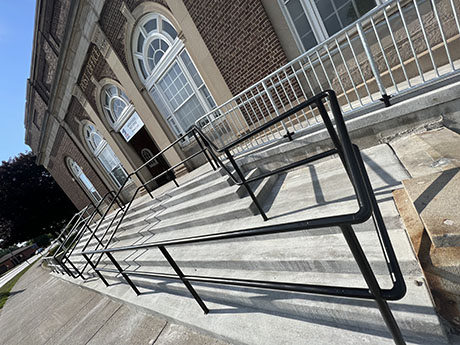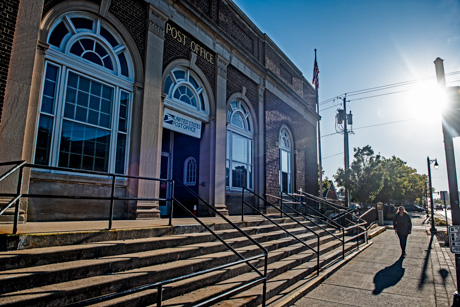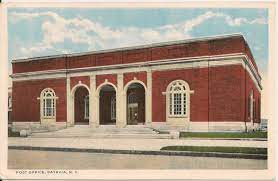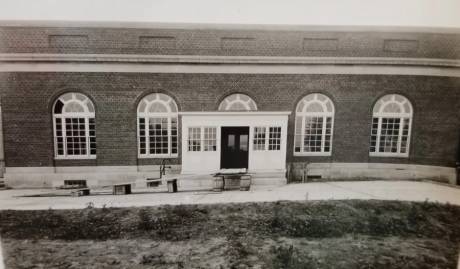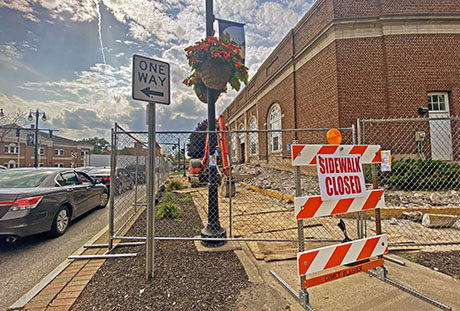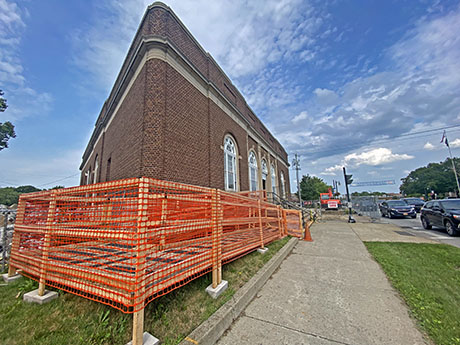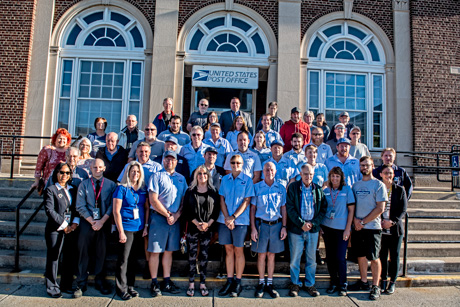The Barber Conable Post Office Building in Batavia is 100 years old.
Construction of the post office began in 1916 with a $57,993 bid awarded to contractor George F. Rossell, of Rochester, according to the City of Batavia History book by Ruth M. McEvoy.
Because of World War I, Rossell had a hard time completing the project as he was beset by higher costs and construction supervisors who kept going off to war. He gave up in October 1917, voiding the contract.
Progress continued slowly under the supervision of E.D. Gray and it was finally ready for postal employees to relocate from a rented building on Jackson Street to their new headquarters.
The post office was built based on plans by John Taylor Knox, the former architect of the U.S. Treasury. He designed dozens of federal buildings during his career, including the post office in Buffalo and Niagara Falls.
The cornerstone was laid in 1916 and bears the name of William G. McAdoo, who was Secretary of the Treasury, as "supervising architect."
A few post offices in other communities share common designs with our post office, including Live Oak, Fla., Fulton, Mo., and Menomonie, Wis.
The name of the post office was changed in 2004 by an act of Congress to the Barber Conable Post Office Building. Conable is a former congressman who represented our area and later became president of the World Bank.
Ironically, perhaps, according to McEvoy's book, the Batavia Daily News reported in 1970 that the area's congressman -- who would have been Conable at the time -- had promised the community a new post office building. "In 1990," McEvoy notes, "that promise had not been fulfilled."
When the post office first opened, it had a front porch area. It was enclosed in 1961.
The postmaster in 1919 was John F. Ryan. According to McEvoy, Ryan and his brother William opened a light shop at 79 Main St., Batavia, in 1898. In 1910, they installed an electrical device that opened and closed their shop windows automatically.
His daughter was Dr. Edith F. Ryan. She intended to open a practice in Philadelphia but war disrupted her plans. She opened an office on Jackson Street and was then appointed as a medical examiner for the school district. That helped her practice grow. She retired in 1957.
Batavia's first postmaster was James Brisbane, who handled postal duties through his general store. He eventually became a wealthy man and the current police headquarters is the former Brisbane mansion. His son Albert was a social reformer and his grandson was the famous journalist of the early 20th century, Arthur Brisbane, who is buried in the Historic Batavia Cemetery. Arthur was also Nellie Bly's editor. The Brisbane Family Papers (1819-1965) are in the Special Collections Research Center at Syracuse University.
The second postmaster was Ebenezer Cary followed by Trumbull Cary. The Cary Mansion, long destroyed, is commemorated by a historic marker on East Main Street.
In 1829, Simeon Cummings became postmaster. He also owned a harness shop in Batavia.
The next postmaster was William Seaver wrote what is perhaps the first history of Batavia in 1849. Another William Seaver, perhaps his son or possibly grandson, or maybe not related at all, took two pictures of Downtown Batavia that The Batavian previously published.
Following Seaver the postmaster was Levant B. Coates, who appears to have owned a drug store that was destroyed in a fire in 1833.
Then came Frederick Follett, publisher of a local newspaper, Spirit of the Times, and the author of a book on the history of the press in Western New York.
The first woman postmaster was Elizabeth R. Erbland, who served from 1994 to 1998, followed by Catherine M. Maniace.
Today (top photo), current and former local postal employees gathered on the front steps of the building for a photo.
Do you know what else is 100 years old? The Upton Monument (watch the video).
